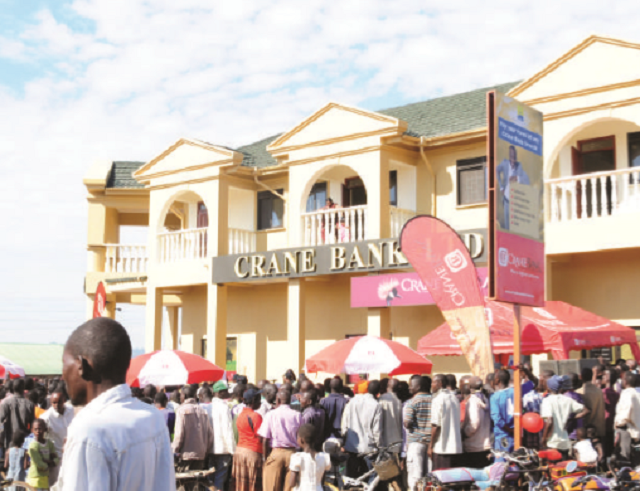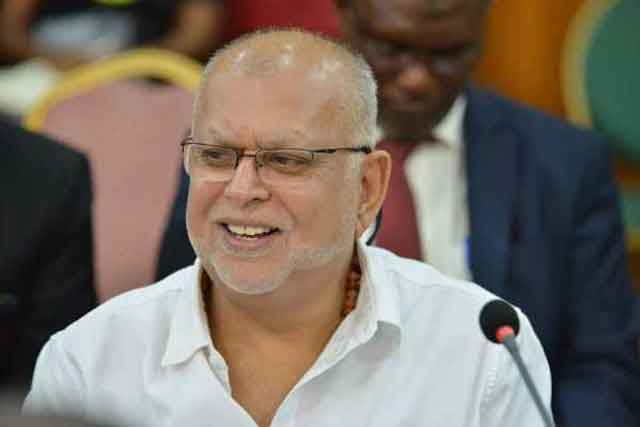
Kampala, Uganda | THE INDEPENDENT | The Supreme Court has this morning ruled that Crane Bank ownership reverts to businessman Sudhir Ruparelia, in a judgment that puts an end to a five-year legal battle preceded by the closure of the Bank
The judgment was made this morning as the court dismissed an appeal filed by the Bank of Uganda/ Crane Bank (in Receivership) against Sudhir Ruparelia and his company Meera Investments Ltd.
Bank of Uganda/Crane Bank in Recievershop had initially taken Sudhir Ruparelia and Meera Investments Ltd. to court for causing financial loss amounting to 397 billion Shillings to Crane Bank in fraudulent transactions and land title transfers. But presiding judge David Wangutusi dismissed the case on a technicality, alleging that Crane Bank (in Receivership) lost its powers to sue and to be sued, thus rendering its suit a nullity.
The Central Bank/Crane Bank (in Receivership) challenged the judgement and maintained that receivership is a management situation, and hence no legal change as to the capacity of a company to sue and be sued.

But in a decision read to the court this morning by the Supreme Court Registrar Mary Babirye on behalf of five Justices of the Supreme Court; Opio Aweri, Faith Mwondha, Lillian Tibatemwa, Ezekiel Muhanguzi and Percy Night Tuhaise, the Court ruled that receivership of Crane Bank Limited ended on January 20, 2018, and from that date, the management and control of Crane Bank returned to its Shareholders.
Sudhir’s lawyer Peter Kabatsi welcomed the decision saying that his client dedicated most of his time and resources over the last five years in pursuit of justice.
On his part Sudhir has indicated that the monies he was accused of siphoning did not reach Crane Bank and that the Legal department of Bank of Uganda prolonged the case to continue benefiting from legal fees.
Crane Bank Limited was closed by the Bank of Uganda on October 20, 2016, after it failed to comply with a capital call on July 1, 2016. Back then, Central Bank Governor Emmanuel Tumusiime Mutebile said that the Bank takeover was guided by the systemic nature of the under-capitalized institution to avoid financial sector instability.
LITIGATION ALERT: The dispute between @BOU_Official Vs Sudhir Rupareila has finally been disposed off and dismissed in favor of our client. The Supreme Court has also held that the management of Crane Bank reverted to the shareholders after the 20/01/2018. Well done to our team.
— KAA (Kampala Associated Advocates) (@KAAdvocates) February 11, 2022
Three years ago, Parliaments’ Committee on Commissions, Statutory Authorities and State Enterprises -COSASE said, in a report, that the closure of Crane Bank by the Bank of Uganda was illegal. The report indicated that an analysis of the Bank’s liquidity from January 1, to January 24, 2017, revealed that the financial institution had recovered from liquidity distress from mid-January 2017 to the time it was disposed on January 25, 2017.
“In fact, Bank of Uganda had stopped injecting money on January 9, 2017. Therefore the bank’s liquidity position had stabilized,” read the report which was presented before parliament by Bugweri County MP Abdu Katuntu.
The committee recommended that in the process of making a decision to liquidate a financial institution, detailed plans for the revival should be exhausted before taking the most extreme action of liquidating.
Earlier, former Crane Bank owner, Sudhir Ruparelia told COSASE that the agreement for the sale of Crane Bank to DFCU was shoddy and fraudulent. He also accused Bank of Uganda senior officials of wanting to steal his properties.
****
URN
 The Independent Uganda: You get the Truth we Pay the Price
The Independent Uganda: You get the Truth we Pay the Price



